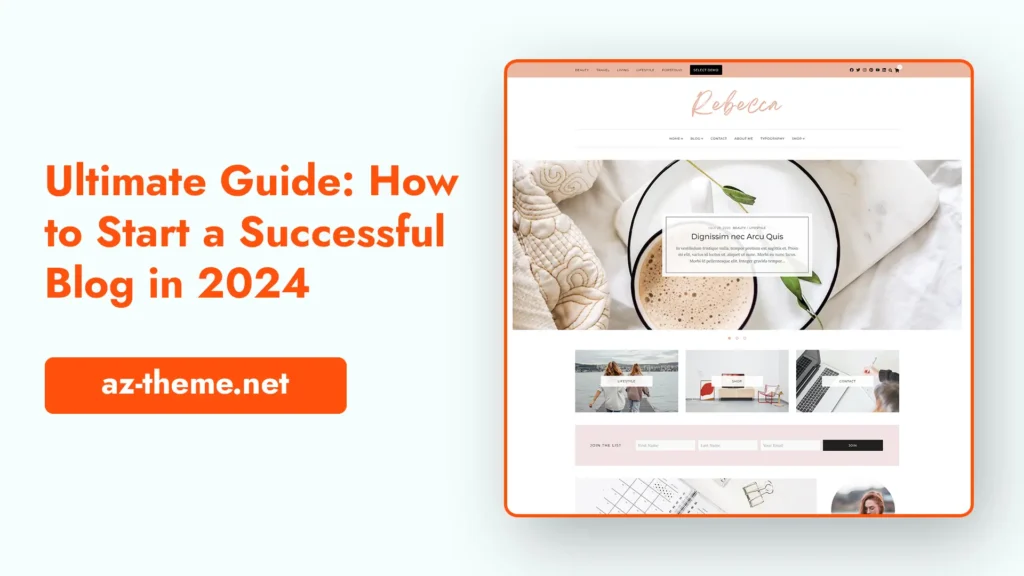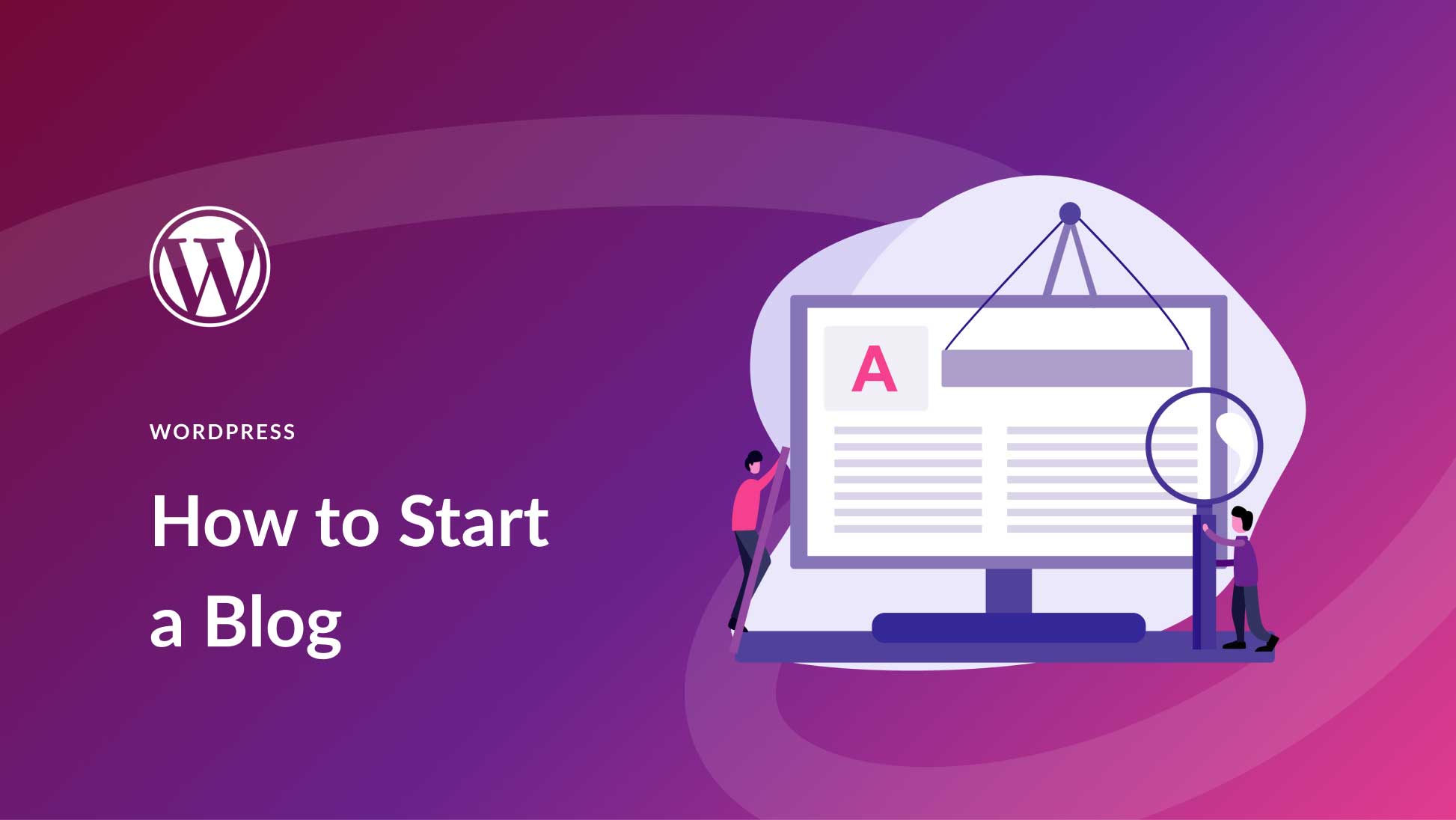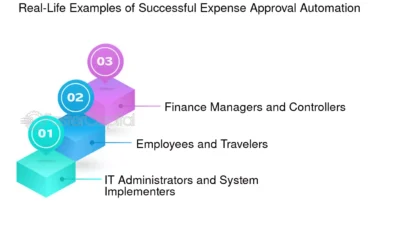Domain & Hosting
How to Start a Successful Blog in 2024-Namecheap: Ultimate Guide

Starting a successful blog in 2024 is achievable. With the right tools, you can thrive.
In today’s digital age, blogging offers a unique way to share your voice. Whether you want to share your passions or build a business, a blog is a powerful platform. Namecheap provides the essential tools to get your blog up and running.
From domain registration to hosting services, Namecheap has you covered. In this guide, we will explore the steps needed to create a successful blog. We will cover everything from choosing a domain name to setting up hosting. Ready to start your blogging journey? Let’s dive in and make 2024 the year you launch your successful blog with Namecheap.

Credit: www.linkedin.com
Choosing Your Niche
Choosing your niche is the first and most crucial step. Your niche determines your blog’s focus. It helps you attract a targeted audience. A well-chosen niche can lead to a successful blog. Let’s dive into how to choose the right niche.
Identifying Interests
Start by identifying your interests. What are you passionate about? Write down topics that excite you. Consider your hobbies, skills, and experiences. Passion for your topic will keep you motivated. It also shows in your writing, making it more engaging for readers.
Think about what you enjoy discussing. This will help you create fresh content regularly. The more you enjoy your niche, the easier it is to stay consistent. Consistency is key to a successful blog.
Market Research
Market research is essential. It helps you understand the demand for your niche. Start by searching for popular blogs in your chosen topics. Check if there is a large audience interested in those subjects.
Use tools like Google Trends to see search trends. This shows how often people search for your topic. You can also use keyword research tools. These tools help you find popular keywords related to your niche.
Look at social media platforms. See what topics are trending. Join online communities related to your niche. Engage with members and see what questions they have. This gives you insight into what content might interest them.
By combining your interests with market research, you can choose a niche that you love and that has an audience. This balance is crucial for a successful blog in 2024.
Selecting A Blogging Platform
Selecting the right blogging platform is crucial for your blog’s success. The platform you choose will impact your blog’s functionality and design. It will also affect your ease of use. So, let’s explore the options available.
WordPress Vs. Other Platforms
WordPress is the most popular blogging platform. It powers millions of websites. Why? Because it offers flexibility and a wide range of features. You can customize your blog with thousands of themes and plugins. WordPress is also SEO-friendly. It helps your blog rank higher in search engines.
But WordPress is not the only choice. Other platforms like Blogger, Wix, and Squarespace also offer great features. These platforms are user-friendly. They provide built-in tools that make blogging easy. Each platform has its own strengths and weaknesses. So, it’s important to know the pros and cons.
Pros And Cons
WordPress has many advantages. It offers extensive customization options. You can add plugins for extra functionality. It’s also great for SEO. But it has a learning curve. Setting up a WordPress blog can be complex. You might need some technical skills.
Blogger is easy to use. It’s free and integrates well with Google services. But it lacks customization options. Wix offers drag-and-drop design. It’s user-friendly but can be expensive. Squarespace provides beautiful templates. It’s easy to use but has limited customization.
Choosing the right platform depends on your needs. Consider your technical skills and budget. Think about the features you need. Select a platform that aligns with your goals.
Registering A Domain With Namecheap
Starting a blog in 2024? The first step is registering a domain. Namecheap is a great choice for this. It’s affordable, user-friendly, and reliable. Let’s walk through the process of registering a domain with Namecheap.
Choosing A Domain Name
Picking a domain name is crucial. It represents your blog’s identity. Here are some tips for choosing the right domain name:
- Keep it short and simple: Easy to remember and type.
- Use keywords: Include words related to your blog’s content.
- Avoid numbers and hyphens: They can be confusing.
- Check availability: Ensure the name isn’t already taken.
Step-by-step Registration
Follow these steps to register your domain with Namecheap:
- Visit Namecheap: Go to Namecheap’s website.
- Search for your domain: Use the search bar to find your desired domain.
- Select your domain: If available, click “Add to Cart”.
- Choose your registration period: Select how long you want to register the domain (1 year, 2 years, etc.).
- Review your cart: Check your selections and proceed to checkout.
- Create an account: Sign up for a Namecheap account if you don’t have one.
- Fill in your details: Provide the necessary information for domain registration.
- Complete your purchase: Enter payment information and confirm your purchase.
- Set up your domain: Follow Namecheap’s instructions to set up and manage your domain.
After registration, you are one step closer to launching your blog. Namecheap makes the process simple and straightforward.

Credit: www.elegantthemes.com
Setting Up Web Hosting
Setting up web hosting is a crucial step in starting a successful blog in 2024. Your choice of web hosting can affect your blog’s performance, security, and user experience. In this section, we will explore different hosting options and focus on Namecheap hosting plans.
Hosting Options
There are several hosting options available for bloggers. Shared hosting is the most common and budget-friendly option. It is ideal for new bloggers. If your blog grows, you might need VPS or dedicated hosting. These options offer more resources and control.
Managed WordPress hosting is another choice. It takes care of updates, backups, and security. This option is perfect for those who want a hassle-free experience. Cloud hosting is also popular. It provides scalability and reliability.
Namecheap Hosting Plans
Namecheap offers various hosting plans suitable for different needs. Their shared hosting plans are affordable and come with essential features. You get free domain, SSL certificate, and 24/7 support. Namecheap’s VPS hosting offers more power and flexibility. It is a great option for growing blogs.
Dedicated servers from Namecheap provide maximum control and performance. This is ideal for high-traffic blogs. Managed WordPress hosting is also available. It includes automatic updates, backups, and enhanced security. Namecheap’s cloud hosting solutions ensure your blog is always online and fast.
Choosing the right hosting plan is vital. It impacts your blog’s success. Namecheap provides reliable and cost-effective options for every blogger.
Designing Your Blog
Designing your blog is a crucial step in creating a successful online presence. A well-designed blog captures the reader’s attention and makes navigation easy. It also reflects your personality and brand. Here’s how to get started.
Choosing A Theme
Choosing the right theme is essential. Your theme should match your blog’s purpose and audience. For a professional look, go for clean and simple designs. If your blog is about travel or lifestyle, vibrant and colorful themes work well.
Namecheap offers a variety of themes that are easy to install and customize. Browse through the options and select a theme that best represents your style.
Customizing Your Design
After selecting a theme, it’s time to customize your design. Start by adding your logo and changing the color scheme to match your brand. Most themes allow you to modify the header, footer, and sidebar.
- Logo: Upload a high-quality logo that represents your brand.
- Color Scheme: Choose colors that complement your theme.
- Fonts: Select easy-to-read fonts for your content.
Next, personalize your blog’s layout. Rearrange elements to suit your style. Many themes offer drag-and-drop features for easy customization.
Consider adding widgets for social media, recent posts, and other features. These enhancements improve user experience and engagement.
| Element | Customization Tips |
|---|---|
| Logo | Ensure it is clear and represents your brand. |
| Color Scheme | Choose a palette that aligns with your brand. |
| Fonts | Opt for readability and consistency. |
Remember, a well-designed blog keeps visitors engaged. It enhances your blog’s overall appeal and readability. Start with a great theme, then customize it to make it your own.
Creating Quality Content
Creating quality content is essential for any successful blog. Your content should be engaging, informative, and easy to read. This section will guide you on how to plan and write posts that will attract and retain readers.
Content Planning
Start with a content calendar. Plan your posts for the month. This helps you stay consistent. Choose topics that interest your audience. Use keyword research to find what people are searching for. Make a list of ideas. Prioritize them based on relevance and demand. Regular updates keep your blog fresh and engaging.
Writing Engaging Posts
Write in a conversational tone. Use short sentences. This makes your content easy to read. Start with a catchy introduction. Grab the reader’s attention early. Break your content into sections. Use subheadings to guide the reader. Add bullet points for easy scanning. Tell stories. People love relatable and personal stories. Conclude with a call to action. Encourage readers to comment or share.
Promoting Your Blog
Starting a blog is just the first step. You need to promote it to get readers. Effective promotion can help your blog grow and reach a wider audience. Let’s explore some strategies to promote your blog successfully.
Social Media Strategies
Social media is a powerful tool for blog promotion. Share your blog posts on platforms like Facebook, Twitter, and Instagram. Create engaging captions that spark interest. Use relevant images to attract attention. Join groups and communities related to your blog’s niche. Engage with your audience by responding to comments and messages. Consistency is key. Post regularly to keep your audience engaged.
Seo Basics
Search Engine Optimization (SEO) helps your blog appear in search results. Use relevant keywords in your blog posts. Include them in your titles, headers, and throughout your content. Write high-quality content that provides value to your readers. Use internal links to connect your posts. This keeps readers on your site longer. Optimize your images with alt text. This helps search engines understand your content. Ensure your blog loads quickly. A fast site improves user experience and boosts your SEO ranking.

Credit: www.namecheap.com
Monetizing Your Blog
Monetizing your blog can turn your passion into profit. In 2024, the opportunities to earn from your blog are vast. This guide will help you understand how to start making money from your blog.
Affiliate Marketing
Affiliate marketing is one of the simplest ways to monetize your blog. You promote products or services from other companies. When your readers buy through your link, you earn a commission. It’s crucial to choose products that match your blog’s content. Your audience should find value in the products you endorse. Include honest reviews and personal experiences. This builds trust with your readers. Sign up for affiliate programs that fit your niche. Some popular options are Amazon Associates, ShareASale, and CJ Affiliate. Track your performance to see what works best.
Sponsored Content
Sponsored content involves partnering with brands to create posts. These posts promote the brand’s products or services. Brands pay you for featuring their content on your blog. Always disclose sponsored content to your readers. Transparency builds trust. Make sure the sponsored content aligns with your blog’s theme. This ensures it feels natural to your audience. Create a media kit to showcase your blog’s reach and engagement. This helps attract potential sponsors. Reach out to brands you love and propose collaboration ideas. Building long-term relationships with brands can lead to steady income.
Frequently Asked Questions
How Do I Choose A Blog Niche?
Pick a topic you love and know well. Check if people search for it.
What Platform Should I Use For Blogging?
WordPress is popular and user-friendly. Namecheap offers easy WordPress hosting.
How Often Should I Post On My Blog?
Aim for once a week. Consistency keeps readers engaged and helps with SEO.
How Can I Drive Traffic To My Blog?
Use social media, SEO, and guest blogging. Share useful content often.
Do I Need To Invest Money To Start A Blog?
Yes, for domain and hosting. Namecheap has affordable options to get started.
Conclusion
Starting a successful blog in 2024 is achievable with Namecheap. Choose a niche, create quality content, and stay consistent. Engage with your audience and promote your blog. Use the right tools and resources. Keep learning and improving. Your blog can grow over time.
Stay patient and focused. Happy blogging!

-

 Insurance3 years ago
Insurance3 years agoHere Is How to Get Your Instant Car Insurance Online In The USA
-

 Software as a Service-SaaS2 months ago
Software as a Service-SaaS2 months ago10 Essential SaaS Tools for Streamlining Your Business in 2024
-

 Finance & Accounting Software2 months ago
Finance & Accounting Software2 months agoUnlock Financial Clarity: How Contract Management Software Transforms Your Business
-

 Finance & Accounting Software2 weeks ago
Finance & Accounting Software2 weeks agoHow Automated Expense Management Simplifies Your Financial Workflow Efficiently
-

 gadgets3 years ago
gadgets3 years agoGet The New iPhone 13 For 2022.Harry up.
-

 Make Money Online4 months ago
Make Money Online4 months agoCreating Passive Income With Blogging: Step-By-Step Guide to Success
-

 Insurance3 years ago
Insurance3 years agoBest Pet Insurance Companies & Plans
-

 Make Money Online4 months ago
Make Money Online4 months agoMaximizing Your Earnings With Online Survey Feedback: Top Tips

